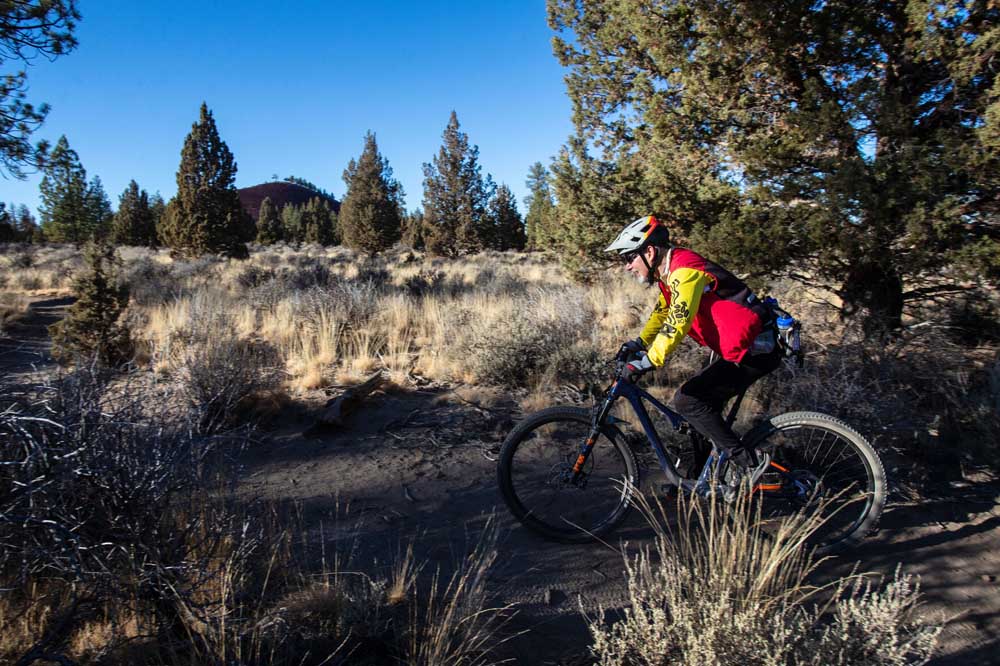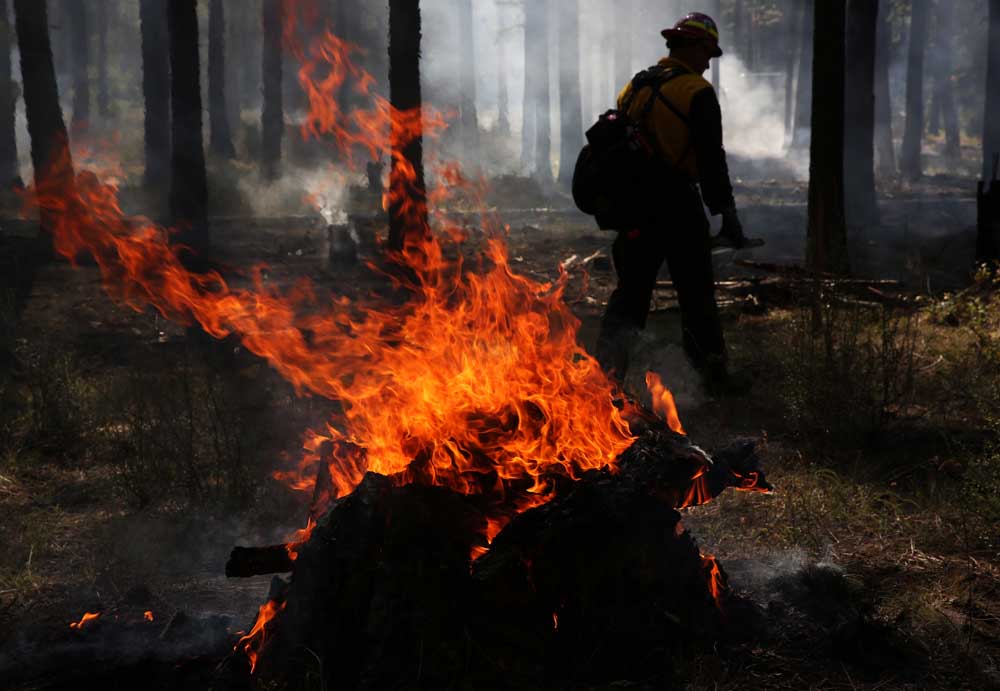Horse Butte area offers prime late fall and winter riding for mountain bikers
Published 3:00 pm Friday, November 15, 2024

- Mike Pulzone rides a singletrack trail in the Horse Butte trail system on Nov. 7 southeast of Bend.
With the early opening of Mt. Bachelor ski area to pass holders this weekend, snow sports season has already officially started.
But that does not mean it is the end of mountain biking season in Central Oregon.
In fact, those who venture north and east of Bend can often find rideable trails all winter long.
One of my favorite winter mountain biking areas is located just southeast of Bend in open sagebrush country. The Horse Butte Trailhead off of Horse Butte Road gives mountain bikers access to singletrack loop options of 10 to 30 miles.
Last weekend the trails in the area were in prime shape after the recent rainfall and cool temperatures.
The Coyote Loop Trail and Arnold Ice Cave Trail (Trail 63) form a loop of about 10 miles that can be ridden in either direction. I started out on the Arnold Ice Cave Trail to ride the loop clockwise.
The trails traverse the burn where the 1996 Skeleton Fire scorched 17,000 acres, opening up sprawling views in every direction and leaving behind sagebrush and bare juniper trees.
The trails near Horse Butte include a relative dearth of climbing or elevation change, and they are not especially technical, making them ridable for all skill levels.
Several years ago, I would ride by myself on the Horse Butte trails and not see another soul. This time around, I came across five or six other mountain bikers and a few trail runners. The word is out, and more and more mountain bikers are realizing that their sport is year-round in Central Oregon.
Aside from Horse Butte, other locations such as Horse Ridge (southeast of Bend off U.S. Highway 20), Maston (southwest of Redmond off Cline Falls Highway), the Radlands in Redmond and Smith Rock State Park/Gray Butte in Terrebonne offer perfect mountain biking conditions throughout much of the late fall and winter.
It is crucial that all user groups cooperate in areas like Horse Butte, where frequent users include hikers, trail runners, mountain bikers and equestrians. Mountain bikers are required to yield to pedestrians and horseback riders. They should also verbally let equestrians know when they are coming, so as not to startle their horses.
While the trails at Horse Butte are ideal for biking this time of year, they also allow for access to lava caves. Anybody can drive down China Hat Road to find some of these caves, but getting there via mountain bike seems to add a sense of adventure.
I followed the signs on the trail to Boyd Cave, located about a quarter of a mile north from the Coyote Loop Trail along Forest Road 560.
Boyd Cave is one of just a few lava caves in the Deschutes National Forest that are open and accessible to the public, according to the U.S. Forest Service.
I walked down the access stairs and stepped into the dark cave. Unfortunately, I failed to plan ahead and bring a headlamp or flashlight, but that did not affect the sense of wonder I felt while stepping down into the lava tube.
The lava caves were formed thousands of years ago from crusts of solidified lava that grew over the top of flowing lava, according to the U.S. Forest Service. When the eruption that produced the lava stopped, the lava drained out of most of the lava tube, forming the cave.
Boyd Cave is a well-preserved lava tube with little collapse and a total length of about 1,880 feet, according to the Forest Service.
The trail going back past Coyote Butte was mostly downhill and fast and I cruised through the sagebursh and past ancient junipers.
By the time I arrived back at the trailhead, I had ridden 12 miles in about 90 minutes, with about 700 feet of ascent.
Sure, it’s time to pull the skis and snowboards out of storage — but we never really have to put the mountain bikes away.









